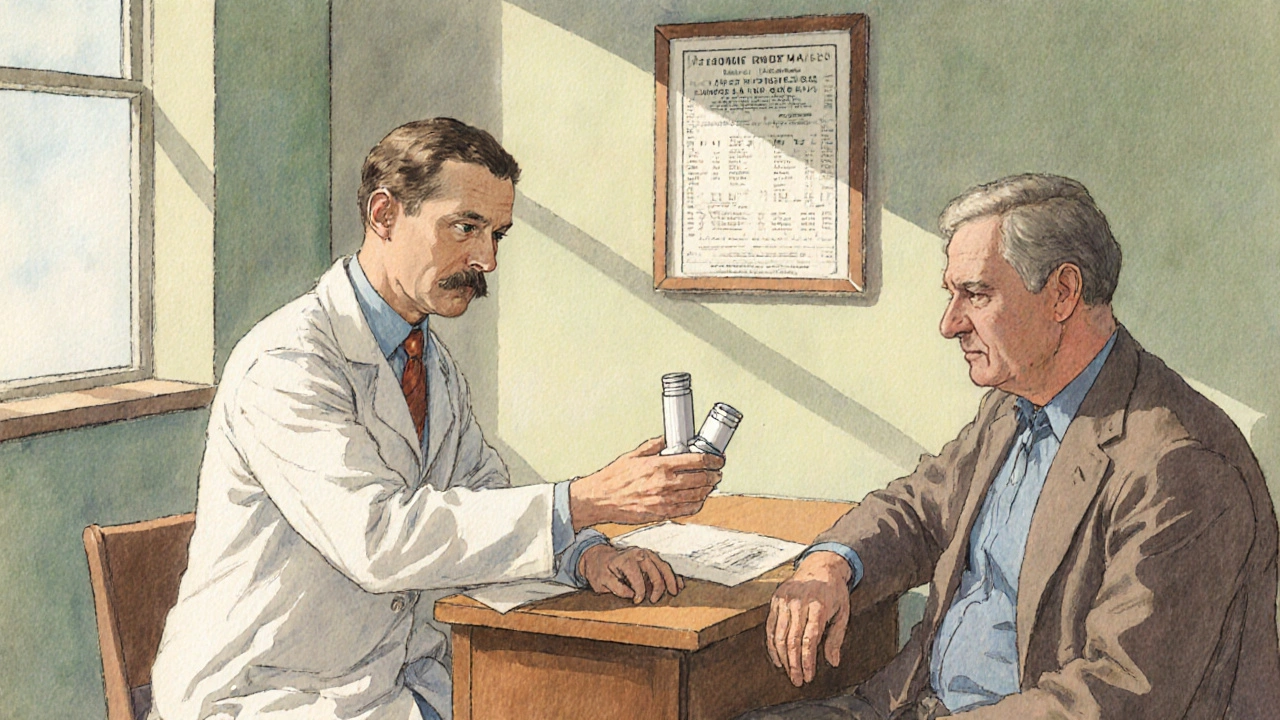Asthma Medication: What It Is and How It Works
When working with asthma medication, a class of drugs that help control breathing problems caused by asthma. Also known as asthma meds, it plays a crucial role in keeping airways open and reducing flare‑ups. Inhaled corticosteroids, anti‑inflammatory drugs taken via an inhaler to reduce airway swelling are a core part of long‑term control, while bronchodilators, medicines that relax the muscles around the airways for quick relief handle sudden symptoms. The right mix of these drugs asthma medication can keep you active and comfortable.
How Different Types Fit Together
Think of asthma medication as a toolbox. Rescue inhalers, short‑acting bronchodilators used for immediate symptom relief are the fast‑acting tools you reach for during an attack. In contrast, maintenance therapy, daily medications like inhaled corticosteroids that keep inflammation low work in the background to prevent attacks from happening. Using both correctly creates a balanced approach: daily control reduces the need for rescue doses, and the rescue inhaler is there if an unexpected trigger hits.
One key relationship is that asthma medication includes both rescue inhalers and maintenance therapy. Another is that proper dosing requires a clear action plan from a doctor, because too little won’t work and too much can cause side effects. Finally, environmental triggers influence how well any asthma medication performs – dust, pollen, or smoke can make even the best regimen struggle.
When you first start a new inhaler, you’ll learn the technique: shake the device, exhale fully, place the mouthpiece, and inhale slowly while pressing the canister. A common mistake is breathing in too quickly, which deposits the drug in the mouth instead of the lungs. Most doctors will watch you do it the first few times to make sure the medication reaches where it’s needed.
Side effects differ by drug class. Inhaled corticosteroids may cause a mild sore throat or hoarse voice, which you can reduce by rinsing your mouth after each use. Short‑acting bronchodilators can cause a jittery feeling or fast heartbeat, especially if you take more than prescribed. Knowing these patterns helps you decide when to call your healthcare provider.
If you travel, keep your inhalers in your carry‑on bag and bring a copy of your prescription. Temperature extremes can affect the medication’s potency, so store them at room temperature and avoid leaving them in a hot car. Having a spare inhaler is also a smart move – you never know when you might need it.
Putting it all together, the collection of articles below dives deeper into specific drugs, how they compare, and what to watch for. Whether you’re looking for a side‑by‑side comparison of rescue inhalers, tips on mastering inhaler technique, or the latest research on newer biologic therapies, you’ll find practical, easy‑to‑read information that fits right into your asthma‑management plan.

Terbutaline Allergic Reactions: Signs, Risks & What to Watch For
Learn how to spot, manage, and prevent allergic reactions to terbutaline, with clear symptoms, risk factors, emergency steps, and a handy comparison to albuterol.
